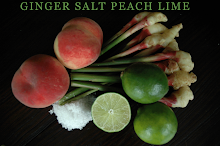It's a bit silly, I know. Room service is over-priced, the food arrives cold, those little bottles of ketchup make for nice little carbon footprints. Still, I can't help myself. My favorite room-service meal happened a few years ago while staying at the Holiday Inn in Natchez, Miss. It may not sound glamorous, but you try a plate full of fried oysters and a Budweiser while watching the sunset over the Mississippi. You'd remember it too.
Move over Mississippi. My new favorite happened earlier this month, when I had a kaiseki meal in a Japanese ryokan inn in Kyoto. Ryokans are Japanese inns, small hotels that usually have onsens, a bath or spa, tatami mats as beds and even rules about quiet time and curfew. Ryokans are seen as little retreats, quiet places to bathe and rest and rejuvenate.
They are also all about the food.
You can stay at a ryokan and skip the meals, dinner and breakfast. You might save a little money, but you would lose a chance to eat kaiseki. This multi-course meal is the star of many ryokans; some inns make more money on the meals than the overnight stays. And, most importantly, they serve this banquet right in your own room.
The dinner starts with some sake -- I think ours was plum-flavored shochu -- and a plate of bite-sized appetizers. My sister, her boyfriend and I were so excited about the offering, we forgot to take pictures. We recovered, somewhat, by the second course of sashimi.

Next came soup, little dishes of vegetables and fried river fish,whose fins were dipped in salt.

The fish, and everything else, came with its own special dipping sauce. For the fish, it was a bright-green sweetened vinegar, meant to balance the painful saltiness.
Did I mention we ordered extra sake?

Onto the custard course, a soft egg mixed with mushroom and bits of fish.

As you can imagine, we were getting a bit full. And, because the dinner is a set menu, we had no idea how much we had ahead of us. I was trying to pace myself. This was a marathon, not a sprint. I should have slowed down to a crawl, because then this beautiful eggplant arrived.

"I'm going to eat this entire thing if it kills me," my sister said. She did, and was happier for it. It was perfectly roasted, with a sweet and salty miso glaze. I wished I had trained harder, because I could only make it through half of mine.
I knew the end was near when the rice arrived, steamy and simple and decorated with a confetti of ginger. Lastly came the pickles, lightly soured cabbage, cucumber and radish.

We had made it, and soon after the plates were cleared and the tea was sipped, the staff came in to make our beds. We crawled under down comforters laid on the floor, cushioned by a thin futon mattress, and fell asleep. The only thing better than having an endless dinner brought to your room is sleeping on a tatami mat. It all makes for sweet dreams indeed.






